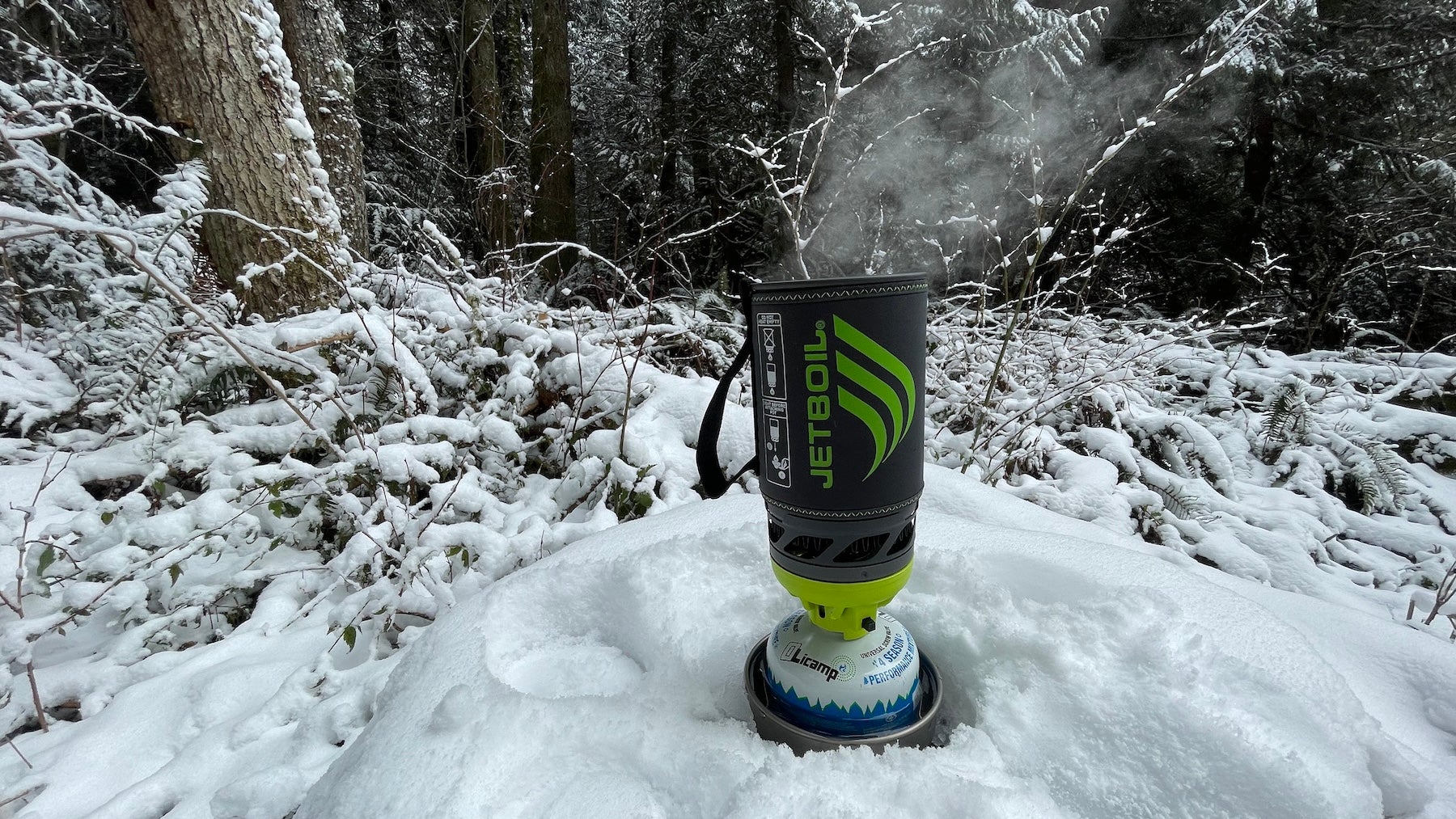If you buy through our links, we may earn an affiliate commission. This supports our mission to get more people active and outside.Learn about Outside Online's affiliate link policy
Will Your Half-Full Fuel Canister Last the Rest of Your Trip? Here's How to Tell.

(Photo: Zoe Gates)
After a summer on the trail, now’s the time to take stock of your gear. Are there half-eaten candy bars stuffed into backpack pockets? When was the last time you backflushed your water filter? Check in on that first-aid kit—how much ibuprofen did you end up taking this summer? End-of-season chores are simple, but for many hikers, handling fuel canisters is the most confusing and arduous.
Personally, I have a small cache of semi-used fuel canisters taking up space in a corner of my gear closet. If you, like me, are afraid of losing hot water halfway through the trip and frequently end up buying a full one or packing a spare, you also probably do too. Instead of constantly stocking up, there are ways to estimate whether your half-full fuel canister will last your entire trip.
First, Weigh Your Canister
The amount of fuel in your canister is the difference between the can’s full weight and its empty weight. Standard fuel canisters typically are labeled 230 grams, meaning there are 230 grams of fuel inside. Although the exact weight varies depending on the brand, these canisters typically weigh around 150 grams when empty. Smaller fuel canisters have between 100 and 110 grams of fuel inside, depending on the brand, and typically weigh about 100 grams when empty. I recently put a 100-gram Jetboil fuel canister I had on my kitchen scale, and it weighed 142 grams in total. So, I have about 42 grams of fuel left in that canister.
Don’t have a kitchen scale? You can grab one for as little as $10 online or at your local store. In a pinch, you can also measure your canister by floating it in a pot or bowl and comparing how deep it sinks to an empty and full canister of the same size; learn how in this primer from our archives.

Second, Calculate Your Fuel Needs
Think about your meal plan. A hiker drinking morning coffee or tea then eating a rehydrated dinner will need to boil about a liter of water per day. Multiply the number of liters you’ll need to boil per day by the number of people in your party. Then multiply that by the number of days you’ll be out. Finally, multiply that result by the grams of fuel it takes to boil a liter of water. You can find out how much fuel your stove needs by checking the manufacturer’s specs, or measure it yourself by weighing your canister, boiling a liter of water with it, and then weighing it again.
Alternatively, rough it out: A standard canister stove (think the MSR Pocket Rocket 2) will use approximately 15 grams of fuel per liter boiled in optimal conditions, while a Jetboil Flash or other integrated stove will use approximately 10. Cold temperatures will increase your fuel needs, as will wind. If you expect it to be breezy, up those numbers by about 50 percent. Really windy and no sheltered cook spots available? Expect to use double the fuel.
Example: If you’re planning on boiling one liter of water per day per person and you’re on a 3-day excursion in breezy and temperate conditions with a 4-person group and packing a Pocket Rocket, you’ll multiply 1 x 3 x 4 x 15 x 1.5 and get 270. So, you’ll need at least 270 grams of fuel—that’s about a full, regular-size canister, plus a half-full small one—to support your group’s needs.
Third, Read Up On Fuel Transfers
There are ways to pass fuel from one partially filled can into another, rendering one fuller and another emptier. Refilling fuel canisters with devices like the FlipFuel or G-Works Gas saver Plus can be a little tricky on the first go, and there are certainly ways to do it wrong. (Just ask this hiker who accidentally exploded a canister through his ceiling.) Read your device’s manual and avoid overheating your donor canister, which can lead it to burst.
Don’t forget to recycle your completely empty canisters (burn off the last bit of fuel and puncture it to make sure it’s gas-free) based on your local recycling regulations.